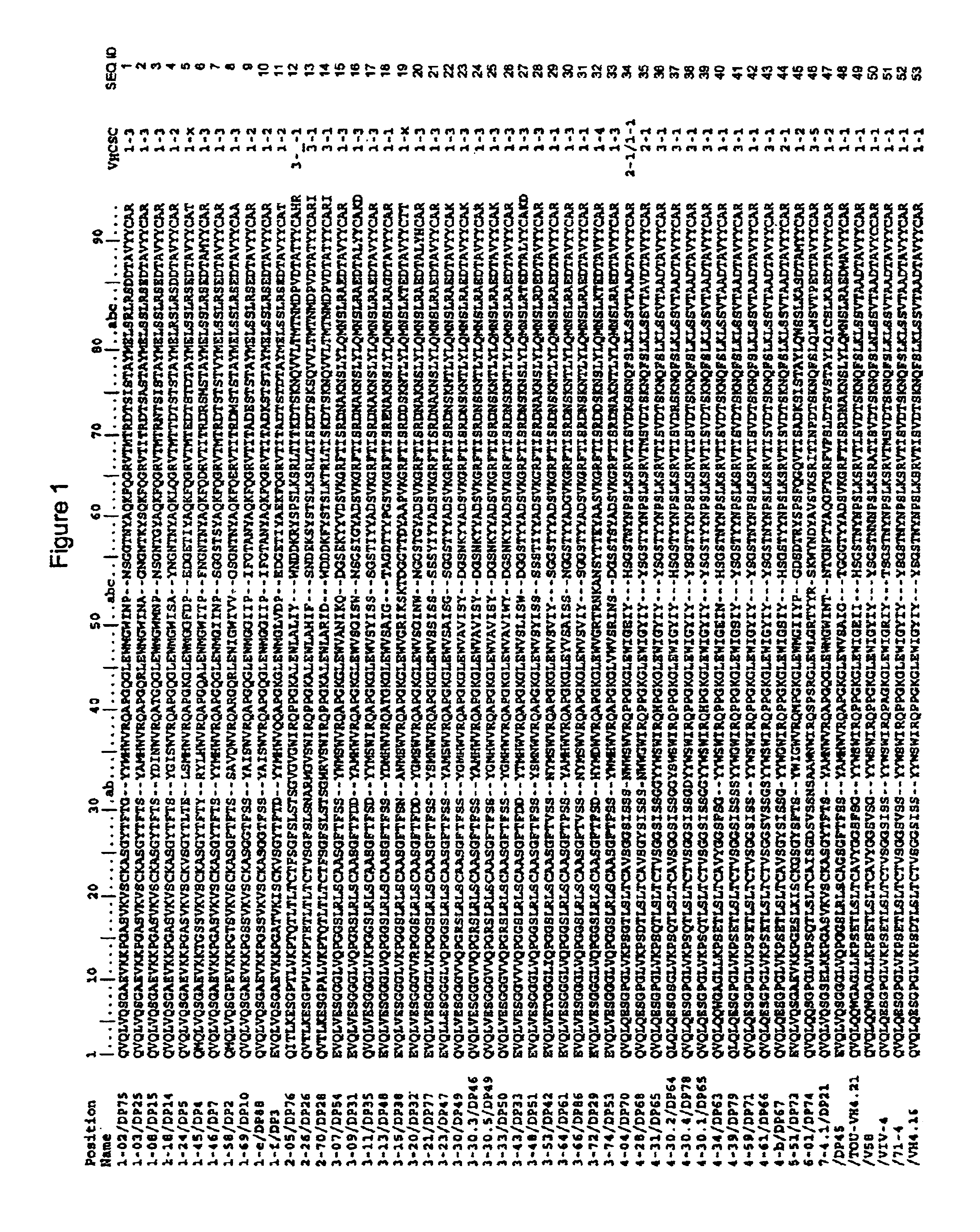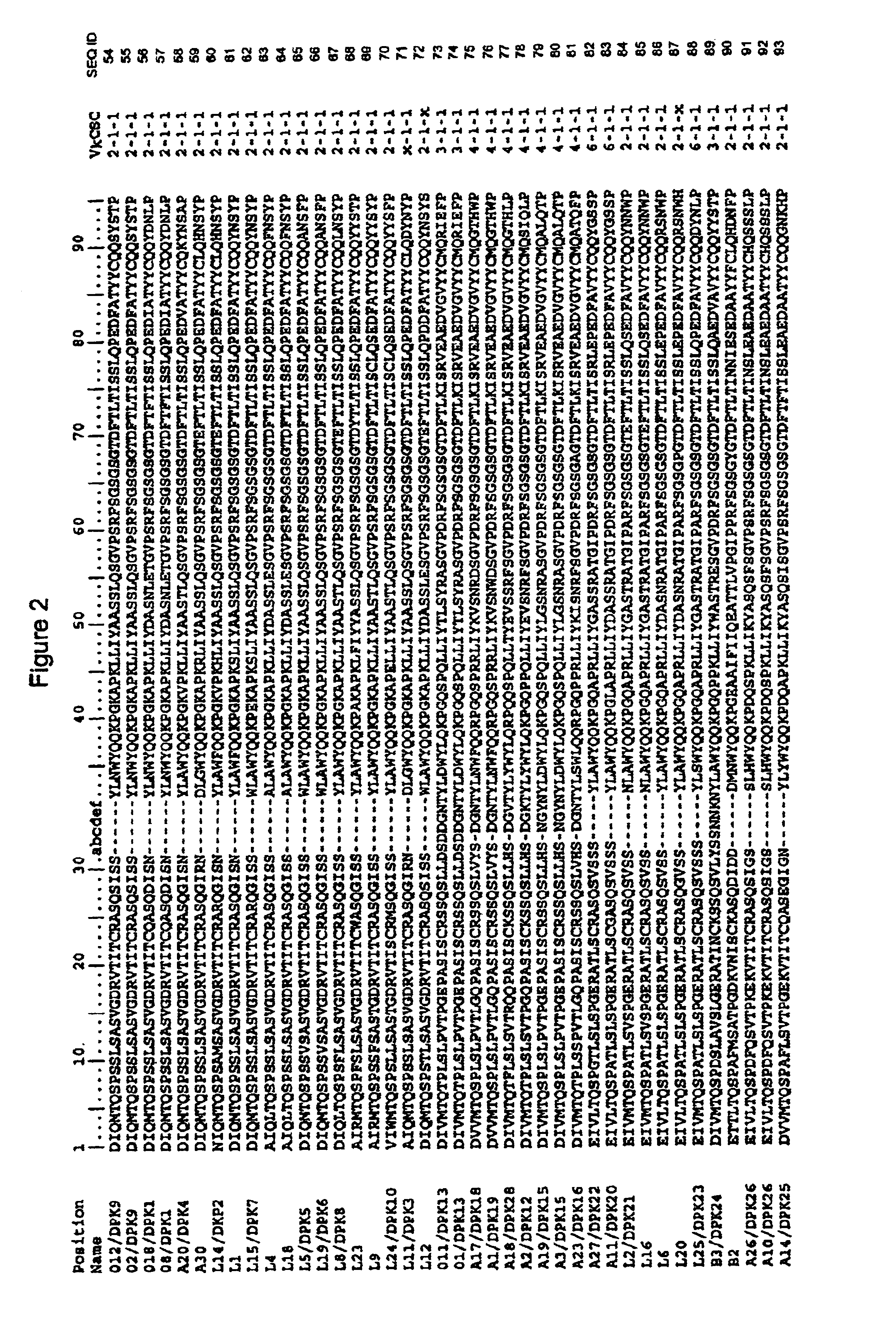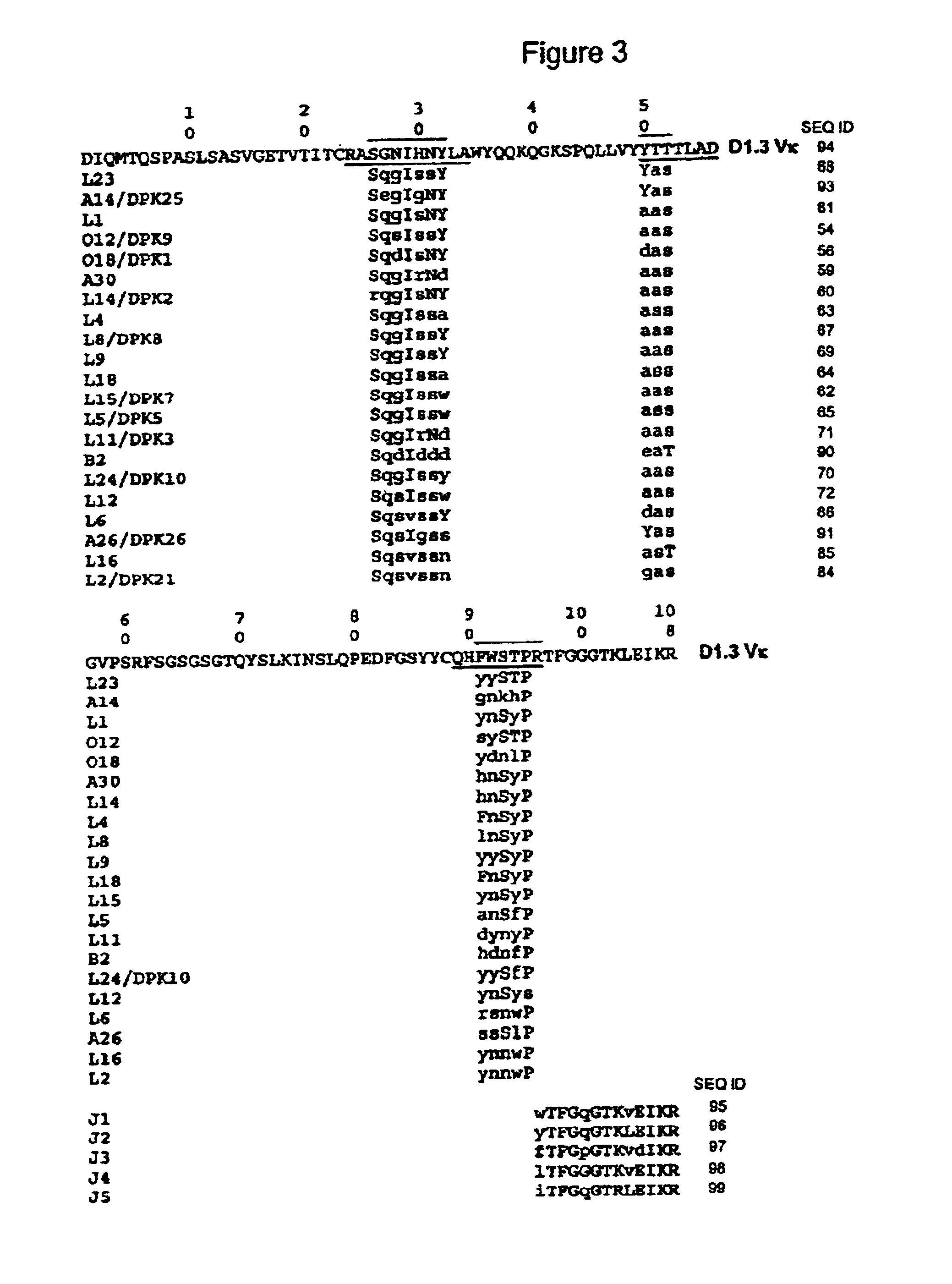Super humanized antibodies
a technology of humanized antibodies and antigens, applied in the field of humanizing antibodies, can solve the problems of reducing the binding of antibodies to their antigens, affecting the immunogenicity of animals/humans, and provoking immune responses in a substantial fraction of patients
- Summary
- Abstract
- Description
- Claims
- Application Information
AI Technical Summary
Benefits of technology
Problems solved by technology
Method used
Image
Examples
example 1
Humanized Anti-Chicken Lysozyme
[0091]The mouse antibody D1.3 (SEQ ID NOS:94, 100) binds to a chicken lysozyme antigen. The peptide sequence of the variable domains of D1.3 (SEQ ID NOS:94, 100) were obtained from the Protein Data Bank, accession number IVFA. The light chain was numbered according to Kabat, and the mouse CDRs were assigned canonical structure types as follows:
[0092]Light chain CDR1, numbered according to Kabat, consists of the sequence:
[0093]
2425262728293031323334RASGNIHNYLA (residues 24 to 34 ofSEQ ID NO:94)
Because there are no insertions or deletions between residues 27 and 31, CDR1 has canonical structure type 2.
[0094]Light chain CDR2, numbered according to Kabat, consists of the sequence:
[0095]
50515253545556YTTTLAD (residues 50 to 56 of SEQ ID NO:94)
This is not an exceptional sequence; its canonical structure type is type 1.
[0096]Light chain CDR3, numbered according to Kabat, consists of the sequence
[0097]
899091929394959697QHFWSTPRT (residues 89 to 97 of SEQ IDNO:...
example 2
Humanized Anti Human CD28
[0111]The mouse anti-human CD28 antibody designated 9.3 (SEQ ID NOS:111, 112) was used as the non-human subject antibody. The mouse 9.3 hybridoma line was isolated and is described by Hansen et al (1980).
[0112]The heavy (residues 31 to 35, residues 50 to 65 and residues 95 to 102 of SEQ ID NO:112) and light (residues 24 to 34, residues 50 to 56 and residues 89 to 95 of SEQ ID NO:111) chain variable region genes of 9.3 were cloned by reverse transcription and the polymerase chain reaction, starting with messenger RNA that had been isolated by a guanidinium isothiocyanate procedure (Chomczynski and Sacchi, 1987) followed by chromatography on oligo-dT columns. Amplification was primed using oligonucleotides complementary to the constant region and oligonucleotides corresponding to regions of the signal peptide or N-terminal framework sequence.
[0113]The light chain was numbered according to Kabat, and CDRs were assigned canonical structure types as follows, with...
example 3
[0132]The mouse anti-scorpion toxin antibody designated BCF2 was used as the subject non-human sequence for a humanized anti-scorpion toxin. The mouse BCF2 hybridoma line was described, and the efficacy of the BCF2 antibody in a mouse model demonstrated by Licea et al (1996). The sequence of the variable domains of BCP2 was disclosed by Selisko et al (1999), and is presented in FIG. 12 (SEQ ID NOS:115, 116, 117, 118).
[0133]Canonical structure types of the light chain were determined as described before, and were type 5 for CDR1, type 1 for CDR2, and type 1 for CDR3 (SEQ ID NO:115). Canonical structure types of the heavy chain CDRs are type 1 for CDR1 and type 2 for CDR2 (SEQ ID NO:117). A humanized version of BCF2 was designed using the considerations discussed above for selection of human germline V and J gene sequences (SEQ ID NOS:116, 118).
[0134]The light chain variable domain consisted of Kabat CDR sequences of the BCF2 light chain (SEQ ID NO:115) an...
PUM
| Property | Measurement | Unit |
|---|---|---|
| Fraction | aaaaa | aaaaa |
| Volume | aaaaa | aaaaa |
| Volume | aaaaa | aaaaa |
Abstract
Description
Claims
Application Information
 Login to View More
Login to View More - R&D
- Intellectual Property
- Life Sciences
- Materials
- Tech Scout
- Unparalleled Data Quality
- Higher Quality Content
- 60% Fewer Hallucinations
Browse by: Latest US Patents, China's latest patents, Technical Efficacy Thesaurus, Application Domain, Technology Topic, Popular Technical Reports.
© 2025 PatSnap. All rights reserved.Legal|Privacy policy|Modern Slavery Act Transparency Statement|Sitemap|About US| Contact US: help@patsnap.com



